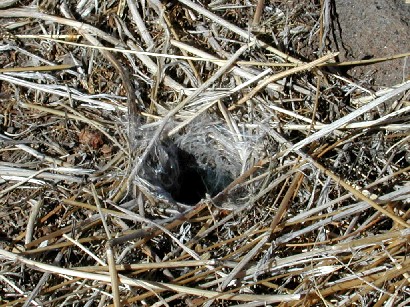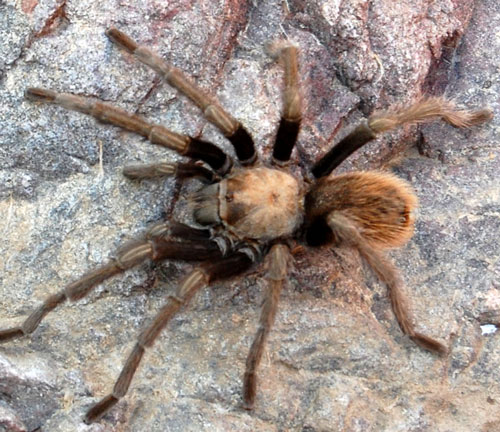Tarantula Spider (burrow)
Aphonopelma

This tarantula's burrow was photographed on 25 Aug. 2002 n. Carefree, Arizona at an elev. of 1020 m in chaparral habitat.
Therophosidae -- Tarantula Spider Family

Photographed at Spur Cross Ranch Conservation Area, Cave Creek, Maricopa Co., Arizona, USA. October 2009.
Notice that there is fresh spider silk within the burrow opening shown at left. The collection of loose thatch around the burrow entrance to which silk strands are attached likely helps in sending vibration signals from potential prey and predators down to the below-ground spider. The spider will emerge to capture a cricket, etc. that passes near the burrow entrance.

This tarantula male was photographed in Haunted Canyon in Gila
County, Arizona. Haunted Canyon is at the eastern end of the Superstition
Mountains at an elevation of 1300 m.. Oct. 26, 2002 with a CoolPix 990.